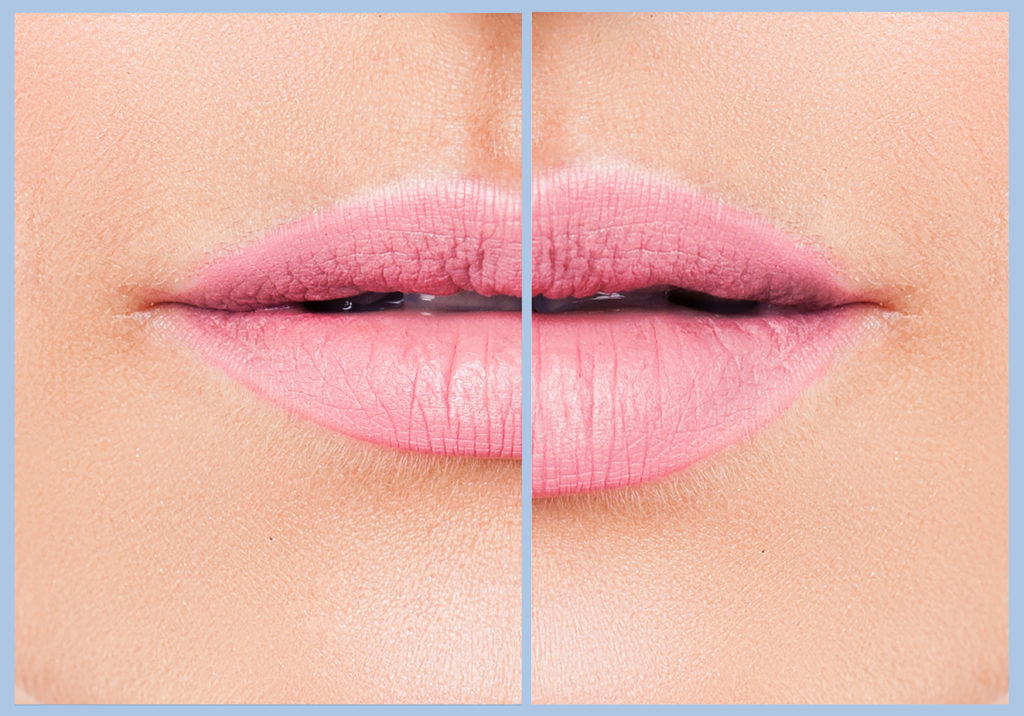Facial aging is caused by three main phenomena:
- The decrease in the number of elastic fibers and collagen in the skin leads to a thinning of the latter (atrophy) with a decrease in its elasticity, and therefore sagging.
- Decreased volume of the facial muscles, especially in the cheekbones and cheeks
- Redistribution of subcutaneous fatty masses more frequently in the lower part of the face.
The result of changes in the skin, muscles and fat is therefore:
- The appearance of deep wrinkles (nasolabial folds around the nose, folds of bitterness laterally under the labial commissures, clown’s wrinkles), superficial wrinkles (upper lip, perimeter of the mouth, cheeks)
- Redistribution of fat in the lower part of the face (lower cheeks) with loss of harmony, oval shape and V-shaped pattern in women (cheekbone-chin-cheekbone), and hollowed out aspect of the temples and cheeks before the ears.

The filling injections provide a material which fills in furrows or wrinkles, in order to soften them, or restore volumes which have diminished over time, thus achieving a soft lifting
The different types of fillers
The most commonly used fillers are absorbable products, mainly Hyaluronic Acid and collagen inducing products.
It is also used in medicine for osteoartritis pain, ophtalmic or visceral surgery
Collagen injections are less and less used, some of animal origin, and sometimes cause allergic reactions (need for a test before treatment).
Non-absorbable injectable products are not widely used because they can cause reactions or defects, therefore permanent.
Lipofilling consists of removing fat from the patient and injecting it into the desired areas. Heavier technique (sampling, centrifugation of fat, reinjections), it is usually indicated for large volume corrections.

Hyaluronic Acid (HA), a gelatinous substance filling the space between collagen and elastic fibers, is naturally contained in the skin of all living organisms.
It also has the ability to attract water and therefore increase the hydration of the skin. The substance is synthesized by genetic engineering.
Due to its natural presence in the skin, its biocompatibility, its biodegradability, its physicochemical characteristics, HA is currently the ideal filling substance.
It is also used in medicine for the treatment of osteoarthritis and in eye and visceral surgery.
Treatment
Depending on the areas to be treated, HA is injected with a needle or micro-cannula (long needle with round tip). An anesthetic cream or local anesthesia is usually applied for the comfort of the patient.
The session lasts 30 to 60 minutes, and the patient can resume social activities quickly.
A discreet moderate erythema may persist a few days after the treatment of certain areas. Any small redness disappears in 48 hours, and can be concealed under a light makeup.
The result is immediate with stabilization after one week (water attractiveness, reduction of any swelling).

Depending on the type of HA and the location of the treatment, the product persists in the skin from 6 months to 2 years.
A consultation with the Dermatologist before treatment determines the indications for treatment and allows the patient to be informed and a quote drawn up.